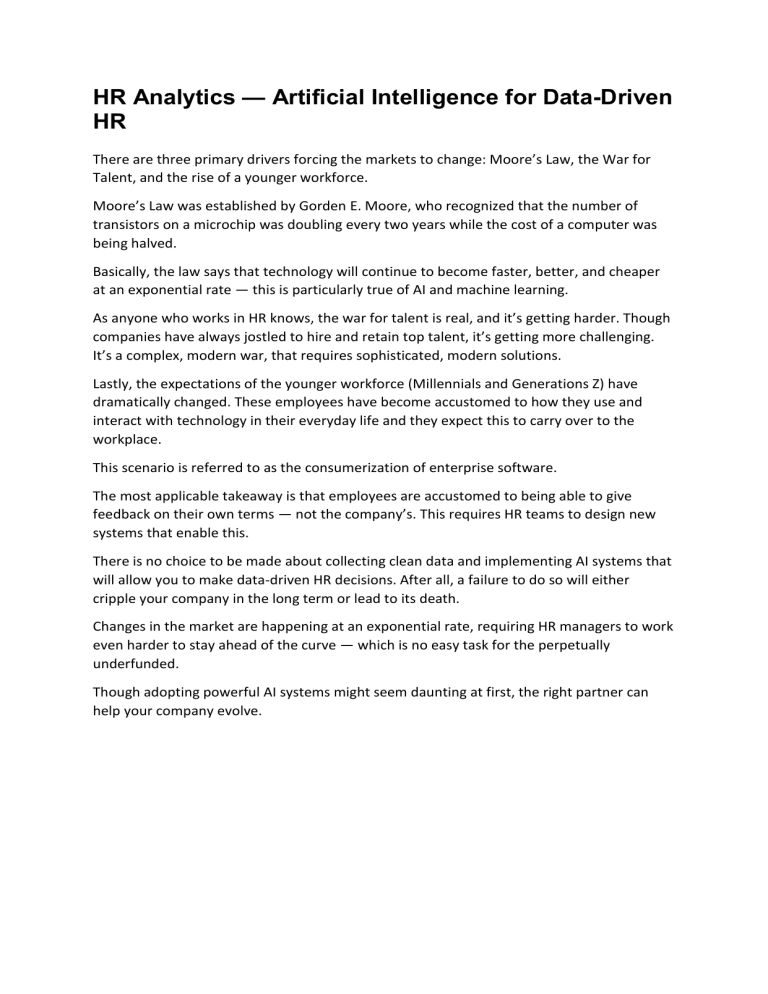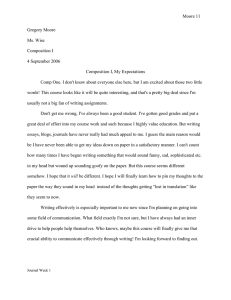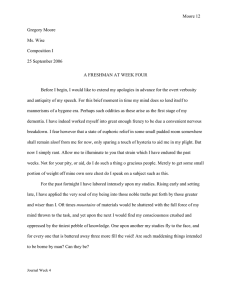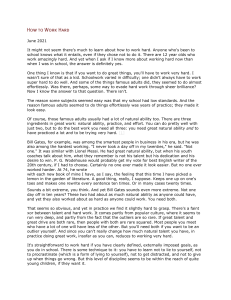
HR Analytics — Artificial Intelligence for Data-Driven HR There are three primary drivers forcing the markets to change: Moore’s Law, the War for Talent, and the rise of a younger workforce. Moore’s Law was established by Gorden E. Moore, who recognized that the number of transistors on a microchip was doubling every two years while the cost of a computer was being halved. Basically, the law says that technology will continue to become faster, better, and cheaper at an exponential rate — this is particularly true of AI and machine learning. As anyone who works in HR knows, the war for talent is real, and it’s getting harder. Though companies have always jostled to hire and retain top talent, it’s getting more challenging. It’s a complex, modern war, that requires sophisticated, modern solutions. Lastly, the expectations of the younger workforce (Millennials and Generations Z) have dramatically changed. These employees have become accustomed to how they use and interact with technology in their everyday life and they expect this to carry over to the workplace. This scenario is referred to as the consumerization of enterprise software. The most applicable takeaway is that employees are accustomed to being able to give feedback on their own terms — not the company’s. This requires HR teams to design new systems that enable this. There is no choice to be made about collecting clean data and implementing AI systems that will allow you to make data-driven HR decisions. After all, a failure to do so will either cripple your company in the long term or lead to its death. Changes in the market are happening at an exponential rate, requiring HR managers to work even harder to stay ahead of the curve — which is no easy task for the perpetually underfunded. Though adopting powerful AI systems might seem daunting at first, the right partner can help your company evolve. If you’re in a situation where your hands feel tied, you can still have an enormous, positive impact by starting to collect relevant HR analytics data.




